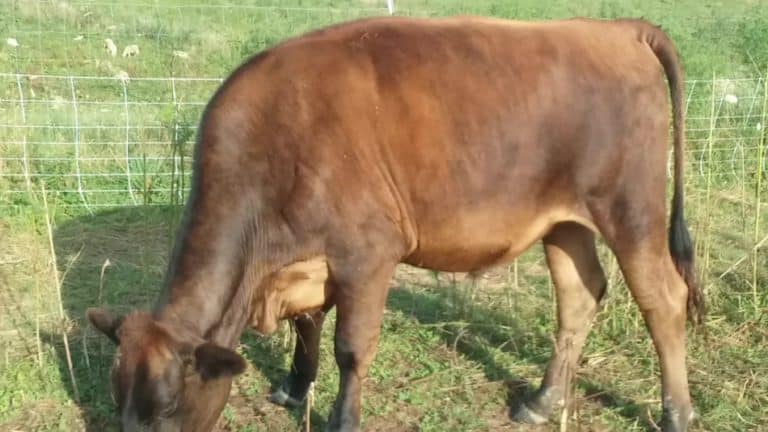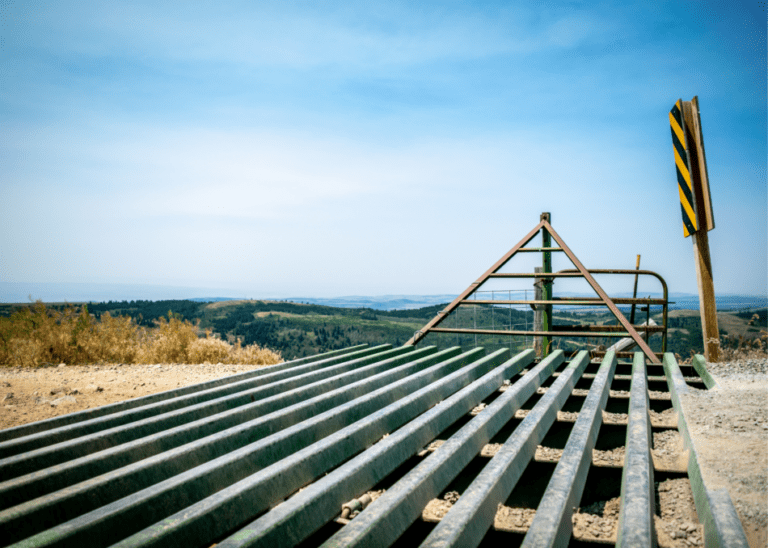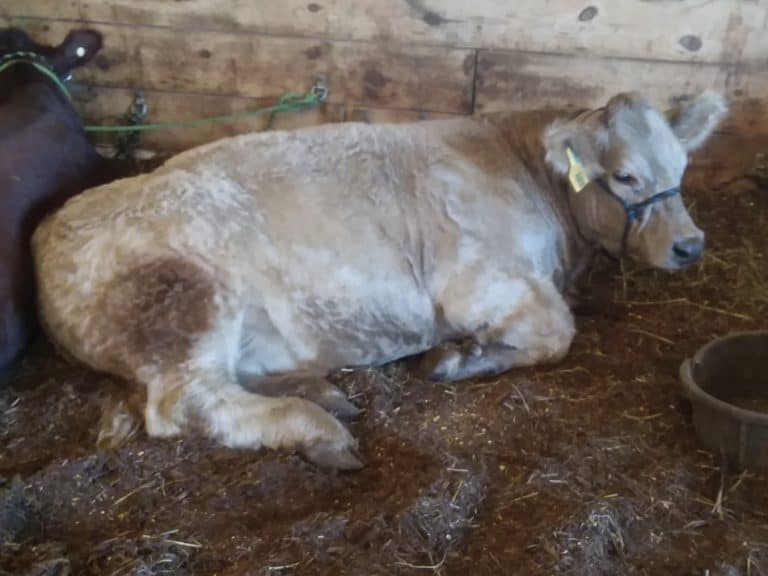Is Raising Your Own Beef Worth It?
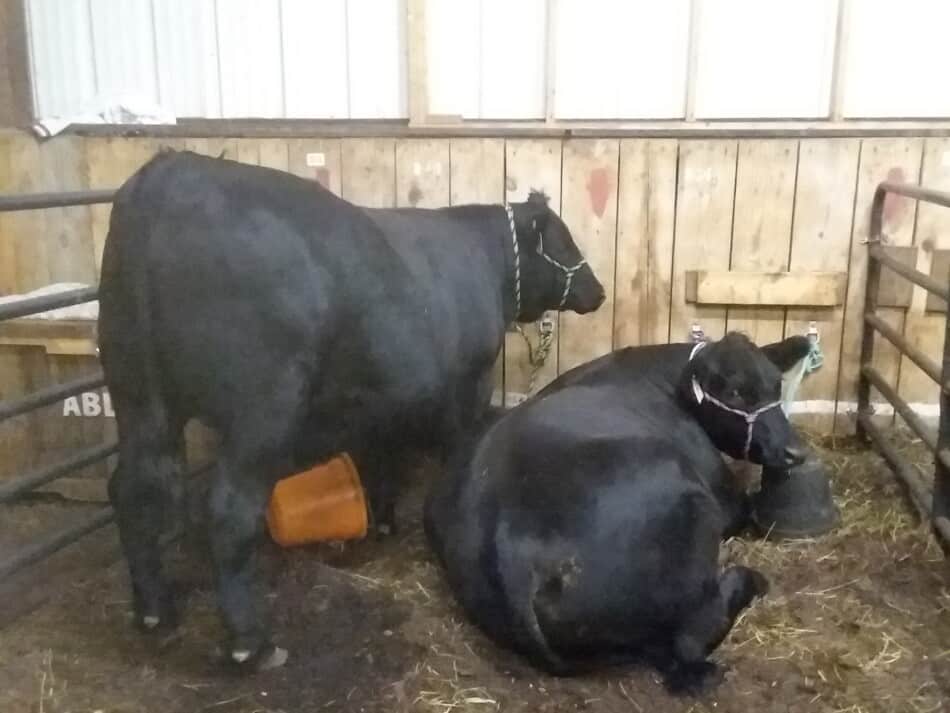
Thinking about raising your own beef? Nothing beats the view of a few steers on pasture or a freezer full of your homegrown custom cut beef!
Raising your own beef takes time and money and will be the best beef you’ve ever had. Will raising your own beef be worth it to you?
Raising your own feeder steer will cost you $3.73 per pound of freezer ready meat. This is for a feeder steer purchased at 685 pounds and fed for 7 months on pasture. If you started a 500 pound feeder steer and kept it for a year, this beef would cost you $4.12 per pound of freezer ready beef.
I’ll be figuring that you bought a couple of feeder steers, instead of have your own herd of cattle.
Since you are a beginner, it makes sense to start with a smaller project and build up when you get more familiar with cattle management.
If you want to get the brood cows and raise your own calves, super! The cost to keep a cow per year will be figured out in exactly the same way as the cost to keep a steer. Read on!
Beginner’s Guide To Feed Costs For Beef Cattle shows you how to calculate the hay budget for your herd.
Please note: While we go over the things you need to consider if you want to raise your own beef, I will be using the term steer through out the article.
You can also raise a heifer for beef, of course. I find it to be less confusing to use steer as the term for a calf raised for meat, even if it is technically incorrect for anyone raising beef bound heifers.
| Cost to purchase a 685 pound steer (steer kept for grazing season only) | $856.25 |
| Days to feed steer up to 1,000 pounds | 210 days |
| Gain per day on forage (no grain) | 1.5 pounds per day |
| Total out of pocket costs for 685 pound steer kept for 7 month grazing season only | $856.25 |
| OR | |
| Cost to purchase a 500 pound steer (steer kept for 11 months, including winter feeding) | $700 each |
| Days to feed steer up to 1,000 pounds | 330 days |
| Gain per day on all forages (grass and winter hay, no grain) | 1.5 pounds per day |
| Hay needed for winter feeding | $323.40 (4 months) |
| Total out of pocket costs for 500 pound steer kept for 11 months (includes hay) | $1,023.40 |
| Cost to butcher, per pound of meat Includes cutting, freezing and wrapping | $1.74 |
| Cost to butcher, per pound of meat all vacuum sealed packages | $2.54 |
| Total cost per pound of meat | $3.73-4.12 |

Plan where you are keeping steers
First off, you’ll need a place to keep your steers. What do you have available?
If you are going to be planning/rotating your grazing, the pasture you have will grow more grass and feed your cattle for a longer period of time.
This requires more effort on your part, but will pay you back in results.
Greg Judy has some excellent videos and information on grazing cattle. Check out this video, then watch more of them!
Rent pasture or open land for your steers
Renting a pasture is always an option, as long as it has an adequate fence. Be sure to add the rental costs to your budget.
Open land that is currently growing grass is more of a challenge, but still doable. I’m figuring, you’ll be going with electric fencing for this one. How will you set up your fencing and how will you power it?
Open land with no grass or other forage growing is going to be tough. This would be a field that was used for row crops, like corn or soybeans, last year. Avoid renting a bare, open field like this.
There will be a lot of set up work before your cattle can even take one bite! It’s doable, of course. It will take take loads of work for an uncertain result. Keep looking around for other options.
Overgrown pastures are usable for cattle
Overgrown pastures are grazeable, as long as the fence is secure. Until the pasture is appropriately managed for a few years, the forage growth you’ll see will be less than a comparable well managed pasture.
It should come around in a few years. Be sure to figure this into your budgeting or make a longer term commitment, so you will still get to use the pasture once it’s performance is up to par.
Right of ways need mowed, or grazed by cattle
Another potentially overlooked grazing opportunity is right of ways. We make hay off of a right of way that they owner does not want the electric company controlling with pesticides. We get the use of this land for free.
Do you have an opportunity like this in your area? Drive around a bit and look with “fresh eyes” at what your area has to offer.
Your steers will need to have water
Don’t forget to include water! While trucking in water is an option, it’s not a good option. Find a different solution, or pass on an area with no water access.
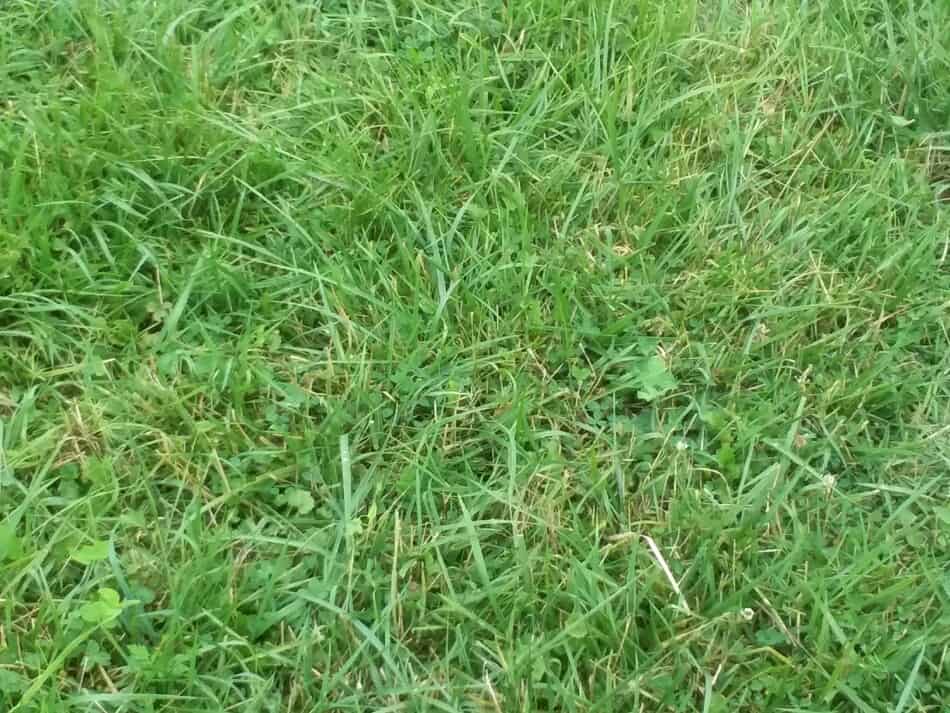
Determine how much forage will grow
Around here, northcentral Ohio, I would want two acres of productive pasture per head for summer grazing. This number is area specific, you’ll definitely need to research acres per steer for your location.
If the pasture isn’t so great, or the year is really dry, I’d want more land or plan to supplement with hay in the summer.
Check out your state agronomy guide to get an idea of the acreage you need to be looking for to support your cattle.
Determine how much land you need per steer
This is where you need the agronomy guide. You can get a hard copy for a fee or just look it up online for free. Either way, get familiar with this booklet.
For me, the easiest way to figure out how much your steer will need to eat is to use hay yields for the area.
Even if you do not plan to make or feed any hay, hay yields are easy to find numbers that you can use to plan your stocking rate.
Stocking rate is how many steers can your pasture support for the grazing season.
Generally speaking, your steers will eat 2% of their body weight per day. This is based on dry matter and believe it or not dry hay is still 10-12% moisture!
To make your calculations more accurate, use the 2% then add another 10% to get the daily hay needs.
This is a link to the University of Nebraska-Lincoln article providing these forage consumption numbers, if you want to get more details.
Here is an example: if your steer weighs 1,000 pounds, he’ll need to eat 22 pounds of hay or the equivalent amount of forage per day.
1,000 x 2%=20 pounds of hay x 10% added for moisture=22 pounds total
Determine how much pasture you’ll need per steer
Now that you know you need 22 pounds of hay or the grass equivalent per day per steer, you can figure out how much pasture you’ll need.
Take the 22 pounds per day x number of days grazing the steer x number of steers you are raising to get the amount of forage your cattle need to eat.
If you have two steers that you will be raising for 6 months on pasture, your math will look like this:
22 pounds per day x 2 steers=44 pounds per day
44 pounds of hay per day x 180 days=7,920 pounds of hay
7,920 divided by 2,000 pounds per ton=3.96 tons of hay (we’ll use 4 tons)
To keep your two steers on pasture for 6 months, you’ll need enough area to provide the equivalent grazing for 4 tons of hay.
Divide 4 by the hay production, in tons per acre. How many acres do you need?
Here’s another example: if your area’s normal hay yield per acre is .5 tons per acre, you need to take 4 divided by .5=8 acres of pasture needed
I’m sure you are thinking, the steers are going to be growing the whole summer, why is she using numbers for a nearly finished steer?
Two reasons:
- The pasture will be growing the least when your steers are the biggest, you’ll want to have the grass in place to feed them.
- In our experience, younger stock that is approaching a year old, seems to eat nearly as much as adults. I figure this is to have the extra energy for growth. Either way, they tend to eat more than you think.
If you are willing and able to supplement your pasture with hay when the steers eat it down, these numbers are less of a concern.
If you need the pastured area to completely feed your steers, sharpen your pencil (an old phrase, for sure)! You need to spend some time and figure this stuff out.
Have the area cattle ready
If the area you will be using is not cattle ready, it will take some money and time to get it up to par. Are you willing and able to put up the cash and put in the time?
All of the things you’ll need like electric fencing, a fence charger, water troughs are easily purchased and will last for many years of use. But, you’ll still need to put out the cash at the start.
It will cost $856.25 to buy 685 pound feeder steer
You’ll need to buy your steers, two so they will be pals.
Since we will be keeping the feeder steer for the grazing months only, we’ll use mid April through mid Nov we need a steer that can reach 1,000 pounds in this 7 month time frame.
You can get weaned calves in the fall and keep them for a year, as well. This is more common in my area, but involves keeping the steers over winter, which some people may not want to do.
Get 650-700 pound feeder steers
7 months is 210 days. Your steer will be able to gain 1.5 pounds of weight per day (Agrilife Today article by Robert Burns, 10/2014) on all he can eat grass.
Now we need to figure out how much each steer can gain in 210 days. Take the number of days you’ll have the steers and multiply by 1.5 pounds of gain per day.
1.5 x 210=315 pounds
Now take 1,000 steer you want to have and subtract the gain you can get to come up with the weight of the steer you need to buy.
1,000 pound finished steer – 315 pounds of gain=685 pound feeder steer needed
Using these numbers, you’ll need to buy 685 pound feeder steers.
Check the feeder steer prices
Look up the mid April market report for the sale closest to you to get an idea of the price of a 685 pound feeder steer in April. Here is the April 17, 2019 Mt. Hope auction report listing feeder cattle as $70-142.50. This price is per 100 pounds.
We’ll say we paid $1.25 per pound for our steers, which would be $856.25 per steer.
Update for 2023: My husband attended a feeder calf sale last week and the low price was $1.50 per pound (up from $1.25 used above) but a more likely price of $1.75 per pound to get a nicer one.
Remember, all of these figures are completely customizable to your location and situation. I’m using numbers and grazing days that are likely for my area (Ohio).
Unless you live here, or pretty close, you’ll want to make some adjustments. Change the figures to fit your area!
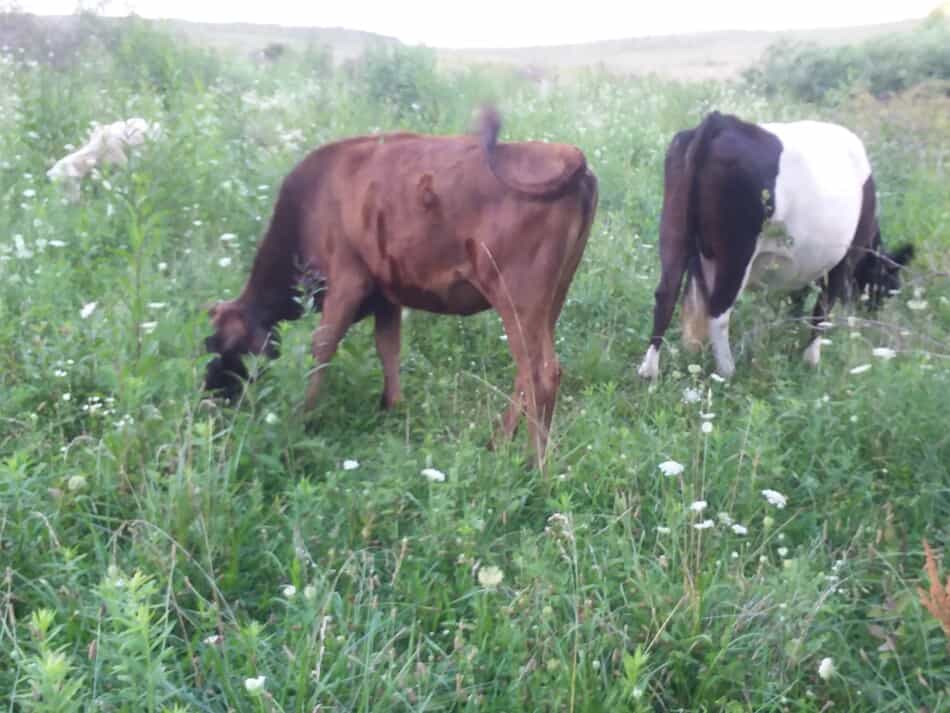
It will take 24-28 months to naturally raise a steer for meat
If this number surprises you, spend some time watching grazing videos and less time reading industrial ag type articles. We are not talking about feedlot style, high grain diets here!
Grass raised beef takes time. Taking over two years to get from newborn to finished is normal when your steer is eating biologically appropriate foods, like forages.
Anyone getting steers to finish faster than 24-28 months is feeding grain to get faster gains.
Feeding grain will make the steer grow faster
Your steers do not need grain, ever. However, I feel obligated to mention that feeding grain will make them gain faster.
Grain comes with potential problems, like digestive disturbances and lowering the health benefits of the beef, specifically messing up the natural Omega 3 to Omega 6 fat balance and reducing the amount of CLA. Healthline: Grass-Fed vs. Grain-Fed Beef, by Kris Gunnars
Maybe you are wondering: since I’m not a fan of giving cattle grain, why even mention grain, at all? That’s easy, I feel that you have the right to make your own decisions. It’s my job to provide information, not to tell you what to do.
I am also aware that grain can make up for a shortage of pasture. To me, if you have to feed a bit of grain in order to raise your own meat, I would rather you feed the grain than skip this opportunity.
I would rather see you take the chance of raising your own beef, even if things aren’t perfect this year, and refine your process and management as you go.
Hay for 2 steers is $646.80-980.00
If you are going to keep your steers for the grazing season only, you can skip this section or read it for information only. You won’t need to buy hay for your steers unless you are keeping them for the winter.
You may prefer to keep your steer for a longer period of time than just the grazing season. If so, you’ll need to figure out winter hay.
Around here it is more common for people to have a steer or two butchered in the fall then get the next fall’s steers right away.
These folks are raising steers 11+ months of the year, depending upon when they get the new ones after they clean out the barn.
1st Or 2nd Cutting Hay shows you the easy things to look for to determine if the hay you are considering buying will work for you and your herd.
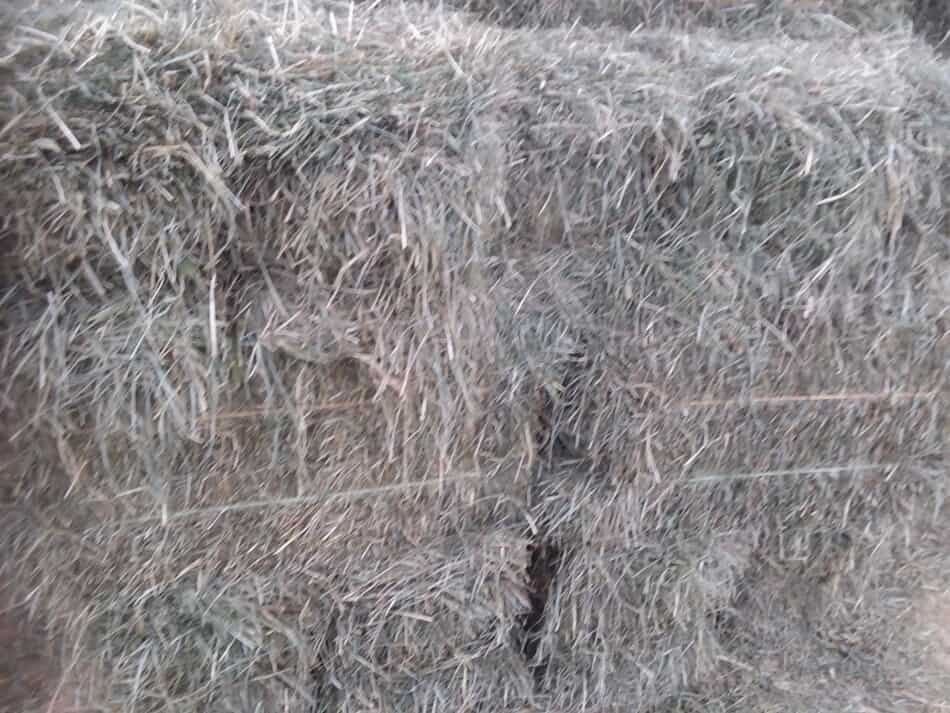
Check the prices for your area for both the feeders and hay to see how these prices will shake out for you.
You’ll find the prices of the fall purchased feeders the same as always, in an auction market report. We’ll do an example of fall purchased feeder steers in the next section.
The hay you need for winter feeding can be purchased and delivered to you. You’ll need between 2.6-4 tons for two steers. 2.6 tons is for a 4 month hay feeding season, 4 tons if for a 6 month hay feeding season.
Currently, a nice load of good hay for my area would cost around $245 per ton. That is small square bales delivered within 10 miles of the auction. If you live further than 10 miles, you pay the difference.
Using $245 per ton, your steers would need $980 worth of hay for the winter or non grazing seasons totaling six months.
If you are figuring your hay needs to be more like 4 months, you will need 2.64 tons for your steers.
44 pounds per day x 120 days=5,280 divided by 2,000=2.64 tons of hay
Buying the same hay as above, this would cost you $646.80 for the winter’s worth of hay.
2.64 tons of hay x $245 per ton=$6.46.80
Hay auction prices vary by week and demand
I have to admit, to me these costs look high. However, they are what I would have to pay to get good hay here this week.
It is important to remember, at an auction some people need hay now, others have some time and will only buy if the price is right (to them).
Get a few buyers at the same auction that are all out of hay and need it today and the sellers will be glad they brought a load of hay!
This is a great time to point out that shopping early gives you more choices. If it were me, I would look around a bit more and see if this was a high week or the going price for the year.
Use online listings to source hay
In our area, there are a few weekly hay auctions that generally provide a good assortment of hay types and load sizes for you to choose from. If you are not in an area that has an auction, look online.
If any locals have hay for sale, it will be listed online. If you can’t find anything online, ask around at the local farm store.
As far as prices go, look up the market report for your local area, or as close as you can get. This will give you an idea of the going rate for hay near you.
Realize that smaller loads and higher quality hay will sell for more per bale than larger loads or lower quality hay.
I always look on the Farm and Dairy page, Ohio Grain and Livestock Markets for the current prices.
Even if you do not live in or near Ohio, check out this list. It will give you an idea of what you are looking to find for your area.
Fall purchased feeder steers cost $700 each
To get the cost of a fall purchased feeder steer look at your market report for the month you plan to buy your steers. I’ll say November for this example.
Using this Mt. Hope Auction report for a stock cow and feeder sale on September 28, 2020, feeder steers are selling for $115.00-157.50, heifers are $100.00-137.50 and dairy feeders are $80-87.50, all for feeders in the 400-600 pound range.
Using these numbers, we’ll say we paid $1.40 per pound ($140.00 per hundred weight) for two beef steers that are 500 pounds. These two steers will cost $700 each.
How did I come up with needing a 500 pound steer?
Since we can expect 1.5 pounds of gain per day, take the time you plan to keep the steers in days and multiply by 1.5.
For this example we are keeping the steers for 11 months. 11 x 30=330 days
330 days x 1.5 pounds of gain per day=495 pounds of gain that we can put on these steers over the next 11 months.
Take 1,000 pounds (your target finishing weight) -495 pounds=505 pound feeder that you would need to purchase
We purchased a pair of 500 pounders for $700 each.
If we had purchased heifers to feed out, they would be more like $500 each and a dairy steer would be $400. Both of these options will work, but not quite as well. If you have the choice, get the beef steers.
Included steer feed costs are hay and salt blocks
All I have included in this feed budget is the cost of hay and salt blocks. If you are buying more than this for your steers, add your other items in, as well.
I know there is some disagreement as to what should be included in your budget and what you don’t put it. I leave out the things that will vary for you and your situation.
7 Tips To Help You Choose High Quality Hay will give you an idea of how to evaluate the hay you are planning to buy to make sure you get your money’s worth!
Not included are things like land rent, electricity, buying fence, barn space or any time spent with the cattle
As mentioned above, if you need to rent land, buy fencing materials, etc. you’ll need to figure those items into your costs. Same is true for your time.
I leave them out because these costs can be budget crushingly high or zero. Not to mention, how can I possibly tell you what your time is worth? Only you know that!
You should be aware that if you have none of the needed items, no pasture, no fencing, no barn space, your costs the first year are going to be sky high.
All of the things you’ll need to buy will last for many years (except for the land rent) but still have to be paid for up front.
The need to pay for everything that you don’t have at the beginning is the biggest hurdle to raising beef. Don’t let this scare you off, just know that you’ll need to spend some money to get started.
The good news is that your first year with cattle will be your most expensive by far.
The bad news is you still have to cough up the cash at the start. Be ready for these expenses and have them factored into your budget.
How Far Can You Run An Electric Fence? goes over the different types of fence you may want to put up for your cattle and helps you figure out which energizer to get so you’ll have the power to keep your cattle where you put them!

You will get 430 pounds of beef
When you put your steer in the freezer, you will get an average of 430 pounds of beef.
Average is the key word here. The amount of meat you actually end up with in the freezer will depend upon the genetics and size of the steer you had processed and the specific cuts you have in your custom cutting order.
Use beef breed genetics
If you want to get the most meat per steer, use smaller framed beef breed genetics.
I have to admit, we use dairy cross cattle and like what we get. While we know that the cattle would be meatier with 100% beef genetics, we have some dairy cows that we use as brood cows and it works for us.
For example, we had a Jersey Angus cross steer that we raised on 100% grass that was beautiful. Well grown, plenty of fat cover, really a super animal, but it wasn’t quick. He was 2.5 years old or so. It’s doable, it just takes time.
If you want the most “bang for your buck” choose a beef steer. If you are in a part of the country where dairy or dairy cross are easier to come by, get one!
1,000 pound finishing weight steer
The 430 pounds of meat is based on a well finished 1,000 pound steer. If you have a smaller steer or one that is not as filled out, you’ll get less meat. Processing a smaller steer is not a problem, as long as he is well finished.
By finished, I mean has a fat covering under the skin. This fat indicates fat through the muscle, called marbling. Marbling is what makes beef juicy and flavorful. We definitely want that fat layer!
How can you tell if your steer is finished? Look at his chest, between his front legs. Is the area filled out or is it just flapping skin? Filled out means fat, just a skin flap means he needs more time to grow.
Another place to check is at the tailhead. If you see three rolls of fat on the side of the tailhead, he’s looking great and will have wonderful marbling. If you don’t see the fat rolls, he needs more time to put on weight.
Remember, the last few months of growing is when your steer will put on the fat and marbling. A first he is putting on frame, finish comes last. To have great tasting beef, wait for the finish!
The butchering costs will be $1.74 per pound of beef
You’ll have to call around to get specific prices for your area. These are the prices that I could come up with.
| Kill charge | $90 |
| Butcher’s choice cut and wrap | $1.00 per pound (hot carcass weight) |
| Custom cut and wrap | $1.10 per pound (hot carcass weight) |
| Patty making (50 pound minimum) | $1.00 per pound (meat weight) |
| Vacuum sealing | $0.80 per pound (meat weight) |
Here is a link to the pricing page of Sunnyside Meats of Colorado. Be sure to check this page out, it is simple and informative and where I got the numbers for the chart above.
When you are pricing your steer, remember that hot carcass or hanging weight is different than the weight of the packaged freezer ready meat.
If this is the first time you have considered getting your own beef processed, you need to read by article Cost To Butcher Your Own Beef before you go any further!
In this article I explain some of the terms and how costs are figured, in addition to how much meat you can expect to get.
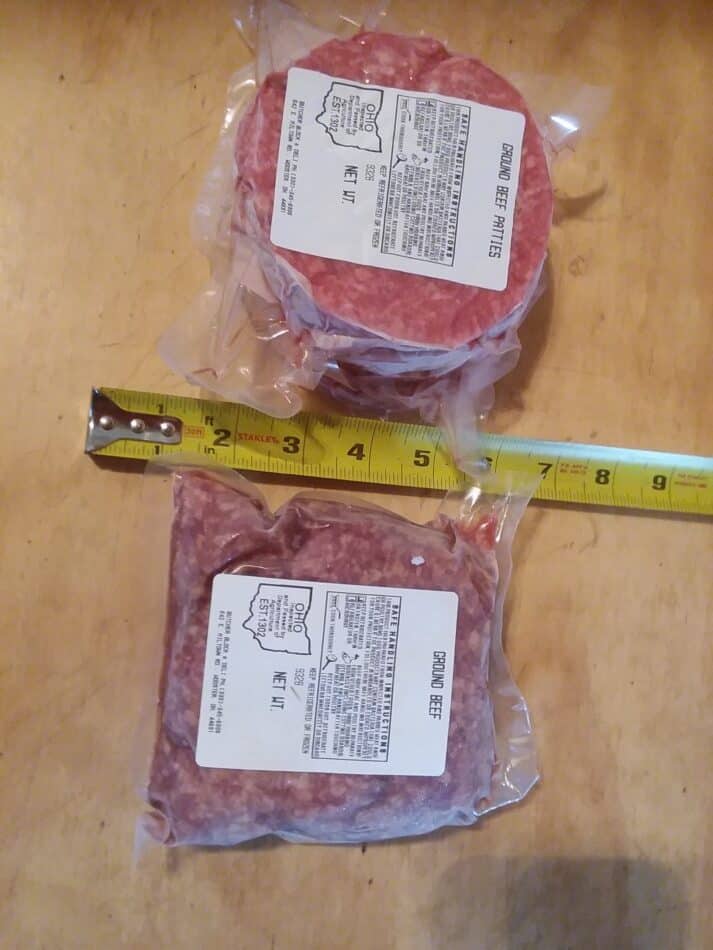
Total cost per pound of beef is $3.73
Now, we are starting to get somewhere! Take your cost of your steer + hay (if you needed it) and add this to the butchering costs. Let me show you the math.
Your steer cost $856.25. Divide by 430=$1.99 per pound, which is the cost of raising the steer per pound of meat
Now take the raising cost of $1.99 + $1.74 butchering cost per pound of meat=$3.73 per pound of freezer ready meat.
If you decided to get the smaller steer and keep it over the winter your costs would be $1,023.40 for the steer and the hay. Divide by 430 =$2.38 to raise the steer per pound of meat.
Take this cost to raise per pound of $2.38 + $1.74 butchering cost per pound to get $4.12 per pound of freezer ready meat.
You can get to these numbers in different ways. Do the figuring in the way that makes sense to you.
No matter how you do the math, make sure you are always comparing to the cost per pound of freezer ready meat. (An easy mistake to make here is to overlook something like prices being listed in hanging weight.)
It is not always cheaper to raise your own beef
Hopefully, you have done some of the math that was in the earlier part of this article. How did your numbers turn out?
This is the part of the article where my ability to help you is limited. You need to do the calculations yourself. You don’t have to be exact, but make some guesstimations and see what shakes out.
Also, check around online for locally raised beef. I typed in “locally raised beef Ohio” and got quite a few good results.
What are the folks in your area charging for great beef?
It could be that by the time you factor in all of the costs in getting and raising the steers including butchering costs, especially if your pastures are not cattle ready, you would be just as well off to buy from someone else.
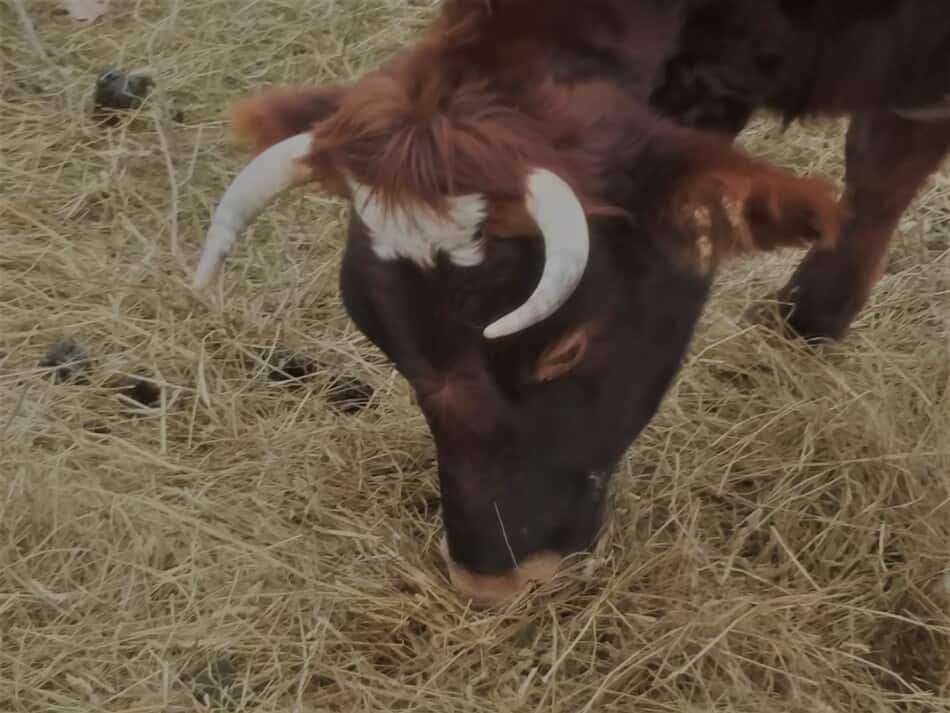
Around here, most places that raise beef are sold out, but I could find a pricing list for White Clover Farm of Cincinnati.
White Clover Farm has a whole beef for $4.85 per pound hanging weight. This is around $3,000 for around 455 pounds of meat.
These numbers are based on information from the pricing page of their site linked above and will vary a bit with the custom cutting order.
This would be $6.59 per pound of freezer ready vacuum sealed beef.
Remember off of that $6.59 comes your butchering costs of $2.54 per pound, since this meat is vacuum sealed. ($2.54 comes from this article on butchering costs)
To figure out your costs that are not butchering related, you’ll need to take $6.59-$2.54=$4.05. $4.05 is the cost per pound of meat to raise the steer to butchering age without the processing costs.
(We take out the processing costs since they are going to be similar for you and the farmer who raises beef for customers.)
Multiply $4.05 by 455 (the average pounds of meat you’ll get from this farm). That totals out to $1,842.75 to buy and raise your steer to match this farm’s prices.
$4.05 per pound of meat x 455 pounds=$1,842.75
Using our numbers above, we can buy a feeder steer for $856.25 and keep it for 7 months eating pasture.
The difference in cost between the purchased steer and your home raised steer is $986.50. If you decided to buy beef from this farm, you would be paying the farm $986.50 to raise your steer for you.
$1,842.75-856.50=$986.50
The only difference between these two numbers is time, yours or the time of the farmer with beef for sale.
Are you willing to do the work of raising a steer for $986.50? Or would you rather pay someone else to do the work for you?
Please take a few minutes to look online at what you can get in your area. These prices and figures apply to my area, this year. You need to know the scoop for your area.
Can you do it for less, or would it make more sense to buy from a local farm? In my area, I am better off to raise my own beef. How does this shake out for you?
If you decide to order from someone else, order early! This year, farms sold out really early because of record demand. For anyone looking to start a side business, this is an opportunity!
Home raised, high quality grass raised beef is a bargain
For me, home raised beef is a bargain.
I can definitely raise some amazing beef for the $1,842.75 that I would be paying someone else to raise my steer instead of doing the work myself.
I can confidently say that it is better for me to raise my own beef because I have done the math and know my costs.
If you have read along, but not done any figuring yet (I know this is a possibility because I’m not a numbers person, either), get cracking on that math! Figuring up your costs is the only way you can get an idea of what to expect!
Remember, the butchering costs are going to be the same for you and the farm that raises beef to sell.
You are just looking at the rest of the costs of the meat and considering how much is your time and effort worth to you.
